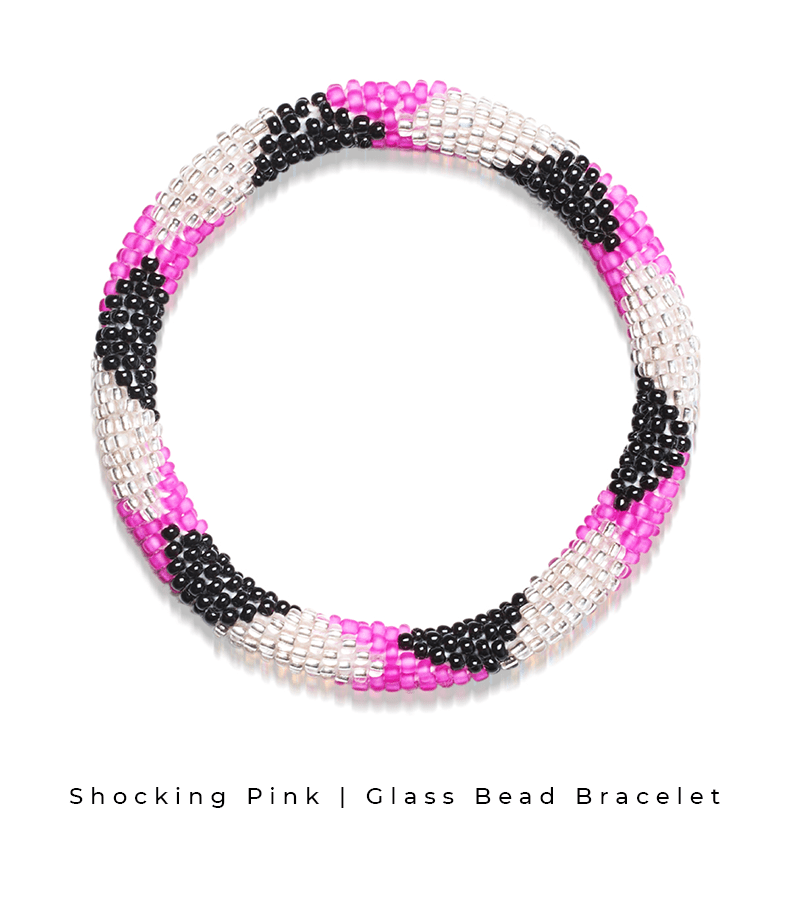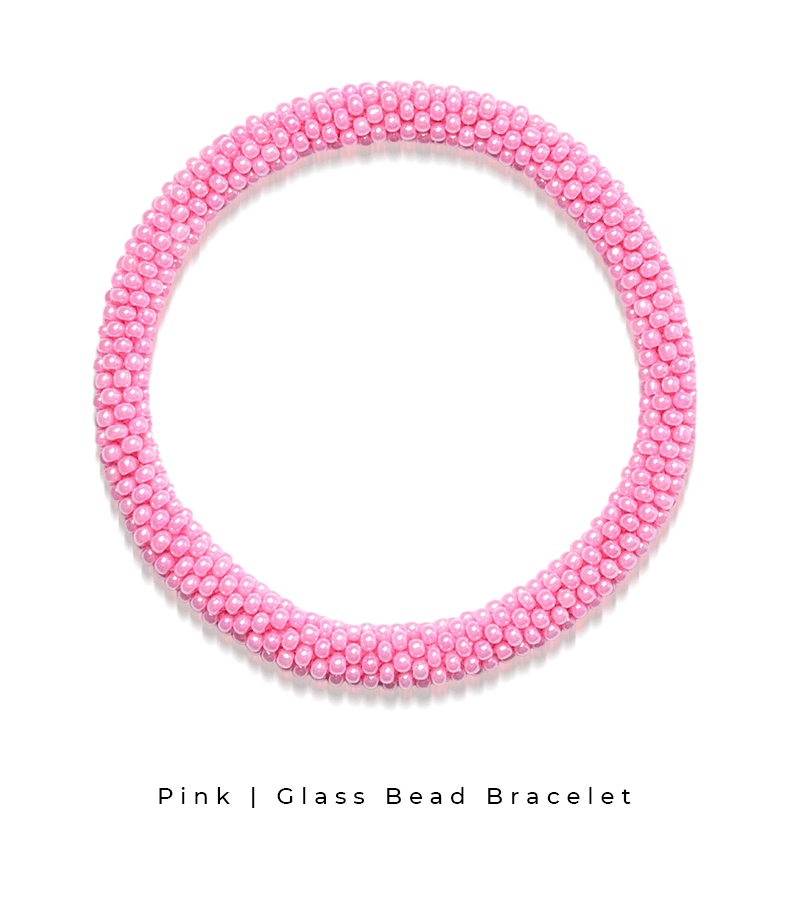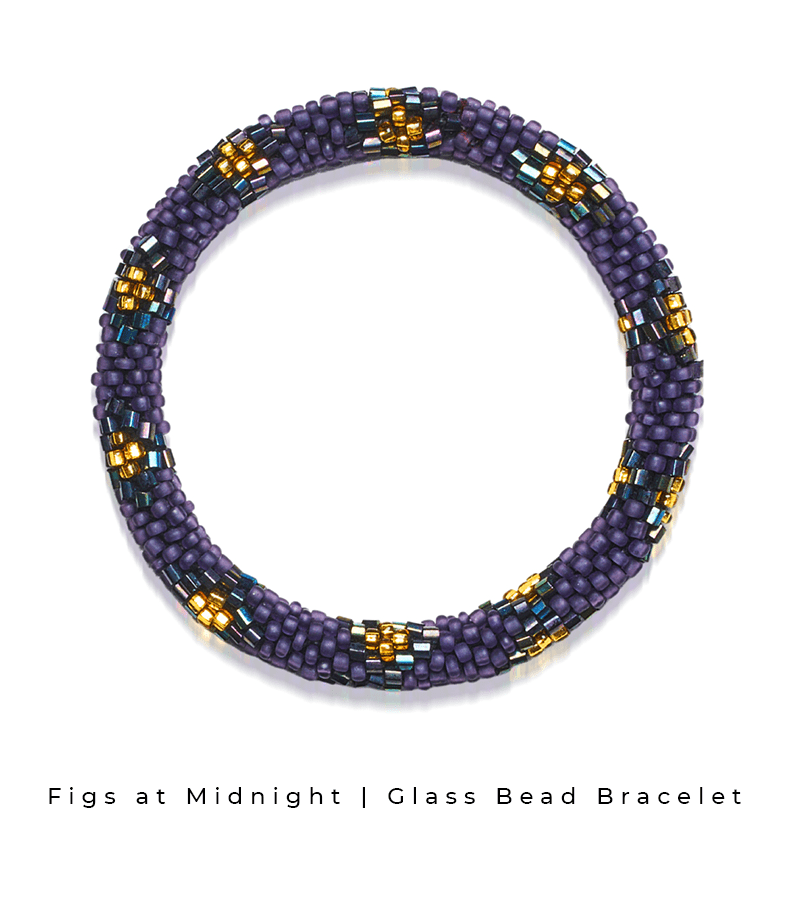Color Significance in NEW Himalaya Collection
Time and time again, we’ve partnered up with meaningful charities and causes - and our new fair trade Himalaya collection is no different.

Each glass bead bracelet is carefully handmade by women artisans in the Kathmandu Valley of Nepal; no two bracelets are identical, and many of our styles have very little stock. Where today’s western world places importance on modern, clean, fast-paced beauty, the Himalaya collection highlights the beauty in the unique, in the rustic imperfections.
This collection isn’t about bulk manufacturing. To the Nepali people, there is no greater beauty than the authentic, ancient, traditional culture woven into each handcrafted glass bead bracelet.

As an area which is predominantly Buddhist, the color of Nepali jewelry has strong spiritual and cultural significance - there is never a color, shape, or symbol without meaning.
So we wanted to give you a chance to learn about the significance of colors in Nepali jewelry. This way you’ll be able to connect with certain colors and styles and feel closer to the extraordinarily talented creators of our fair trade Himalaya Collection.
SHOP THE COLLECTION
And don’t worry - if you identify with a certain set of colors but don’t see a bracelet that fits that color scheme, we’re releasing new items every week. Make sure to keep an eye on our new releases!
BLUE
The other prominent color in the Nepali flag is blue; it provides a sturdy border to the double pennants on the flag.
 |

|
Accordingly, Nepali culture recognizes blue as a symbol for stability, harmony, and peace - this color keeps the fiery red pennants calm and balanced. Nepalese people believe that witnessing blue items will trigger the body to supply soothing chemicals and tranquil emotions. Basically, if you need some calm and balance in your life (don’t we all), our blue glass bead bracelets are the way to go. Brb - I need multiples of our Cancun Dreams bracelet ASAP.
GREEN
As a color that has become synonymous with nature, Nepali people greatly believe in the healing and growth powers of the color green.
In Nepali culture, those who wear green are regarded as pure, good, and have an uncanny ability to heal and help those around them. As if they wield the restorative power of nature itself, people who wear green are beacons of growth, regeneration, and health. Green symbolizes a togetherness, a unity; you can only be a good human if you help others around you.
YELLOW
The youthful energy that surrounds the color yellow is a prominent symbolic connection in Nepali culture.
 |

|
Those who wear yellow are typically warm, happy, and yearn to brighten the lives of everyone around them. To Nepali people, yellow symbolizes the better, awakened versions of ourselves. But don’t take our word for it; remarkably, studies worldwide have shown that people who surround themselves with yellow items have elevated memory, communication, and self-belief.
WHITE
Many cultures present opposing connotations of white - some tie it to death and funerals, while some believe it represents birth and health. Nepali culture situates itself somewhere between.
 |

|
In Nepali culture, white represents regeneration; those who wear white acknowledge the hardships they’ve been through, but they look forward, working toward a new start and a better situation. White signifies safety, innocence, light, but also the clearing of barriers. If you’re facing obstacles that seem insurmountable, Nepali culture insists in the freshness and clean strength of white jewelry.
BLACK
Though many consider black to be nothing but an absence of color, Nepali people still connect symbolism and importance to it.
 |

|
Nepali culture associates black with mystery, power, and authority - or lack thereof. Accordingly, black is connected with rebellions, with people who believe in their worth and value in the face of unfair authority. Those who wear black are sophisticated, assertive, and not afraid to show off their attitude.
PINK
Various symbols are culturally attached to different shades of pink in Nepal.
 |

|
For instance, darker pinks (such as in our Sweetbriar Bloom bracelet) represent the more intense and joyous side of love, friendship, and passion while those who wear light pink (such as in our Peach Coral bracelet) are associated more with tenderness, sensitivity, and warmth. All in all, pink is a Nepali symbol for friendship and charm - yet it also places importance on loving yourself as well as others. Friendship bracelets, anyone?
BROWN
While some may think of brown as boring, Nepali culture places exceptional symbolic value on this color.
 |

|
To Nepali people, brown is synonymous with the earth beneath our feet. It symbolizes a steady, firm, dedicated soul. Brown is also tied to notions of “all-organic” and “all-natural” - those who wear brown don’t care much for needless complications. They prefer the simple, reliable, natural things in life. Exposure to items with this color has been proven to promote good health, balance, and a peaceful mental state.
PURPLE
Of all aforementioned colors, Nepali culture places the most magical connections to purple.
 |

|
Purple is one of the rarest colors in nature; accordingly, Nepali people regard purple as a magical color that originates from fantasy, from a world beyond our own. If you wear purple, you are creative, independent, and ambitious. You don’t quite fit into the traditional idea of normal, and even though you try to focus, you can’t help but daydream. (Excuse me as I buy three of the Orchid bracelets)
But don’t get us wrong - we’re not just selling bracelets. By purchasing from this collection, you are directly supporting women in Nepal, a region which has long suffered from an oppressive, patriarchal society. Even in modern times, women in Nepal are trafficked, they cannot obtain citizenship unless their fathers or husbands permit it, and a very recent proposal by the Nepali department of immigration forbids Nepali women under the age of 40 from travelling abroad without express permission from their families and their local government ward office - among other requirements.

NOGU's fair trade Himalaya collection is a stand against this. We want to elevate gender equality and female strength, and your support will help assure this.
Whenever you look down at the shimmering, rustic glass bead bracelet on your wrist, you will know that you made a difference. And that’s what NOGU was made for.














Gwendolyn Lovera On
please keep me apprised of your product, and let me know of new patterns!
Robin Marcoux On
Thank you for the article explaining the meaning of the different colors in the Himalayian bracelets.
While I thought that I would be able to finally determine my predominant color, I found out I need all of them. So far, I’m doing quite well. Every time I see a picture showing one I don’t have, my finger taps the Nogu app! Thank you for my obsession for the last 5-6 years.